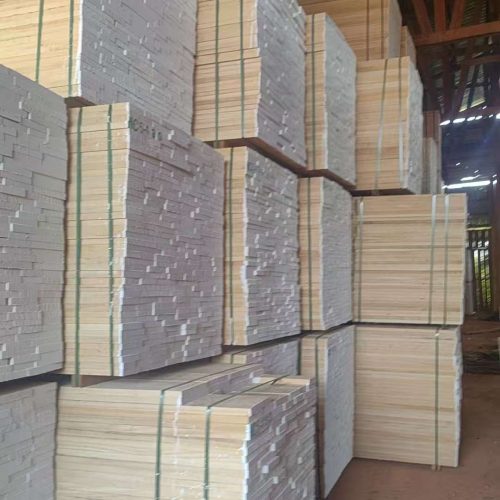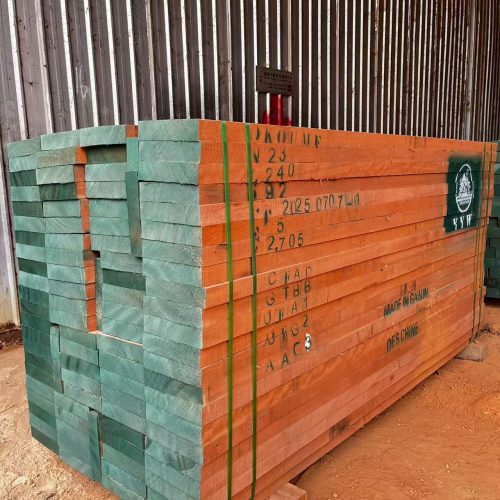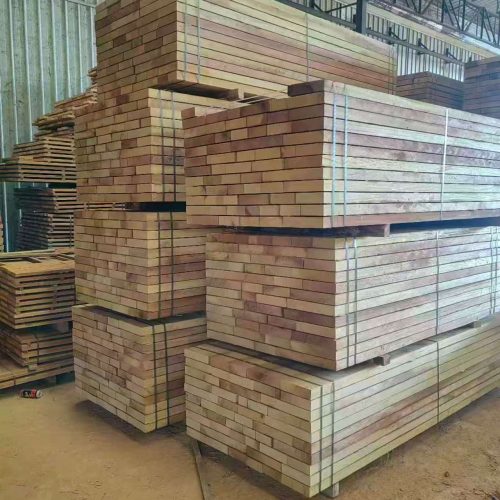What is Sapele Wood?
Sapele, often referred to as African Mahogany, is a dense and durable hardwood native to tropical Africa. It is prized for its rich reddish-brown color, interlocking grain patterns, and excellent workability. Sapele is commonly used in high-end furniture, cabinetry, musical instruments, and decorative veneers.
Sapele Wood Characteristics:
Density: Approximately 640–750 kg/m³
Janka Hardness: Approximately 1,360 lbf (6,060 N)
Color: Heartwood ranges from golden to dark reddish-brown; sapwood is pale yellow to cream-colored. The color tends to darken with age.
Grain: Interlocked, sometimes wavy; fine to medium texture with good natural luster.
Durability: Moderately durable in regard to decay resistance; moderate insect/borer resistance.
Shrinkage: Radial: 5.2%, Tangential: 7.2%, Volumetric: 12.9%
Workability:
Machining: Sapele can be challenging to machine due to its interlocked grain, which may cause tear-out. It requires sharp tools and light cuts to achieve a smooth finish.
Gluing: Takes glue well, ensuring strong, durable joints.
Nailing and Screwing: Works well with nails and screws; pre-drilling is recommended to avoid splitting, especially with thicker cuts.
Finishing: The wood takes finishes and stains well, enhancing its natural color and providing an attractive sheen.
African Sapele Hardwood Applications:
Furniture: Ideal for high-end furniture pieces such as tables, chairs, and cabinets due to its durability and aesthetic appeal.
Cabinetry: Commonly used in kitchen and bathroom cabinetry for its strength and attractive appearance.
Musical Instruments: Used in the construction of musical instruments, particularly for backs and sides of guitars and pianos.
Veneer: Sliced into veneers for decorative applications in furniture and interior design.
Interior Millwork: Widely used for interior moldings, trim, and paneling in both residential and commercial buildings.
Natural Sapele Wood Sustainability:
Conservation Status: Sapele is listed as “Vulnerable” on the IUCN Red List due to habitat loss and over-exploitation.
Environmental Considerations: When purchasing Sapele, ensure the wood is sourced from sustainably managed forests and certified under sustainable forestry programs, such as FSC (Forest Stewardship Council), to help protect forests in the long term.
Why Choose Sapele?
Aesthetic Appeal: Its rich color and distinctive grain patterns make Sapele a visually striking choice for a variety of applications.
Durability: With its high density and hardness, Sapele is suitable for both functional and decorative uses in high-traffic areas.
Versatility: Whether you’re using it for furniture, cabinetry, or musical instruments, Sapele offers excellent versatility for a range of projects.

KD-600x1330.jpg)
KD3-600x800.jpg)
KD1-600x271.jpg)
KD2-600x1330.jpg)
KD-100x100.jpg)
KD3-100x100.jpg)
KD1-100x100.jpg)
KD2-100x100.jpg)



